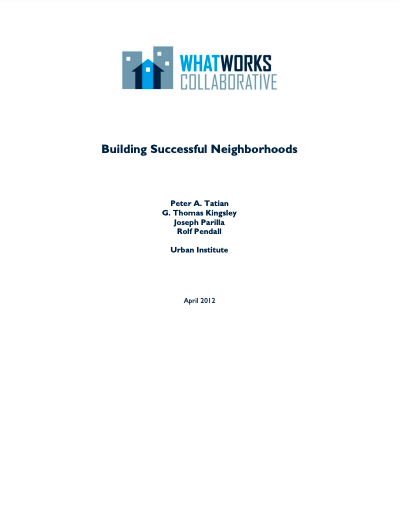Policymakers have been concerned about improving conditions in America’s distressed urban neighborhoods for more than a century. Interest was heightened in the 1980s and 1990s by research shedding new light on the devastating effects of concentrated poverty, for cities overall as well as for the residents of the affected neighborhoods (Jargowsky 1997; Wilson 1987).
Since then, there have been serious debates about how best to address the issue. Some have emphasized direct investment to improve conditions in the troubled neighborhoods themselves, while others have put more weight on mobility strategies, facilitating the movement of the poor out of the worst areas and into “neighborhoods of opportunity” elsewhere. Now, however, there is a growing recognition of the benefits of seeing these approaches as complementary and explicitly planning for their implementation regionally in concert with policies that support sustainable regional development. Pastor and Turner (2010) conclude:
In our view, effectively addressing the problem of concentrated poverty and neighborhood distress requires moving beyond either inward-looking approaches or mass departure. Instead, we need a broader portfolio of place-conscious strategies that simultaneously improve neighborhood conditions, open up access to opportunity rich communities, and realign regional growth and development strategies to better connect low-income people and places with regional opportunities.
 Direct efforts to improve conditions in troubled neighborhoods (through improvements in housing, schools, and other services and amenities) are thus viewed as an important part of the solution. Accordingly, policy makers need to know in some depth how this “inside the neighborhood” work can be motivated and accomplished and what it might mean to try to do so in a regional context. However, while there is a rich literature offering valuable general information on past community initiatives, there is surprisingly little concrete guidance on exactly what to do, how to do it, and where. This paper offers a pathway to address this deficit. Its purposes are (1) to review what policymakers need to know in relevant topical areas; (2) to summarize what is already known in these areas (noting the research basis for the findings); and, thereby, (3) to identify research gaps, outlining a menu of studies that could serve the basis for a new research agenda on neighborhood policy.
Direct efforts to improve conditions in troubled neighborhoods (through improvements in housing, schools, and other services and amenities) are thus viewed as an important part of the solution. Accordingly, policy makers need to know in some depth how this “inside the neighborhood” work can be motivated and accomplished and what it might mean to try to do so in a regional context. However, while there is a rich literature offering valuable general information on past community initiatives, there is surprisingly little concrete guidance on exactly what to do, how to do it, and where. This paper offers a pathway to address this deficit. Its purposes are (1) to review what policymakers need to know in relevant topical areas; (2) to summarize what is already known in these areas (noting the research basis for the findings); and, thereby, (3) to identify research gaps, outlining a menu of studies that could serve the basis for a new research agenda on neighborhood policy.
Read more
Download the PDF
Source
Theme





